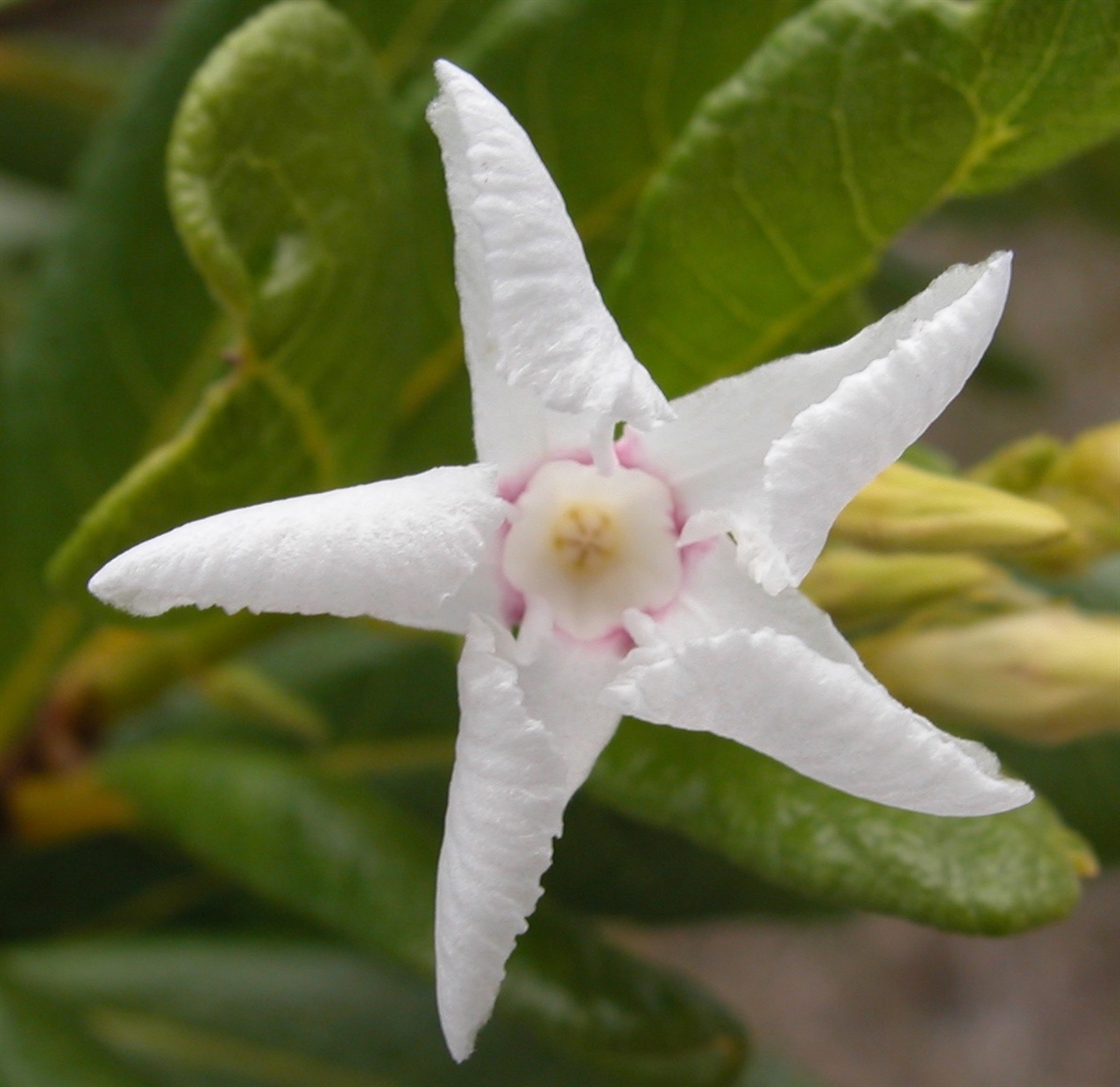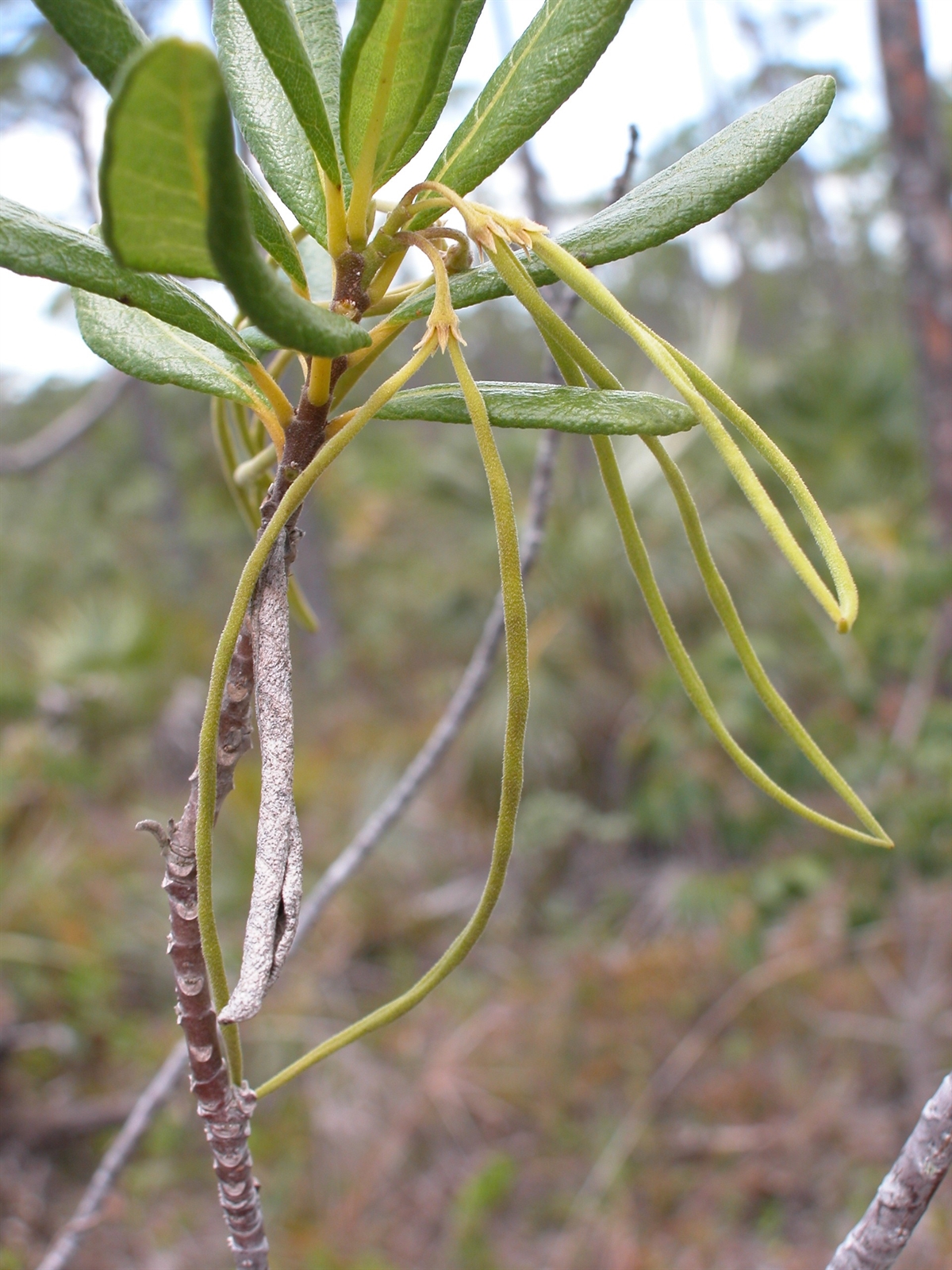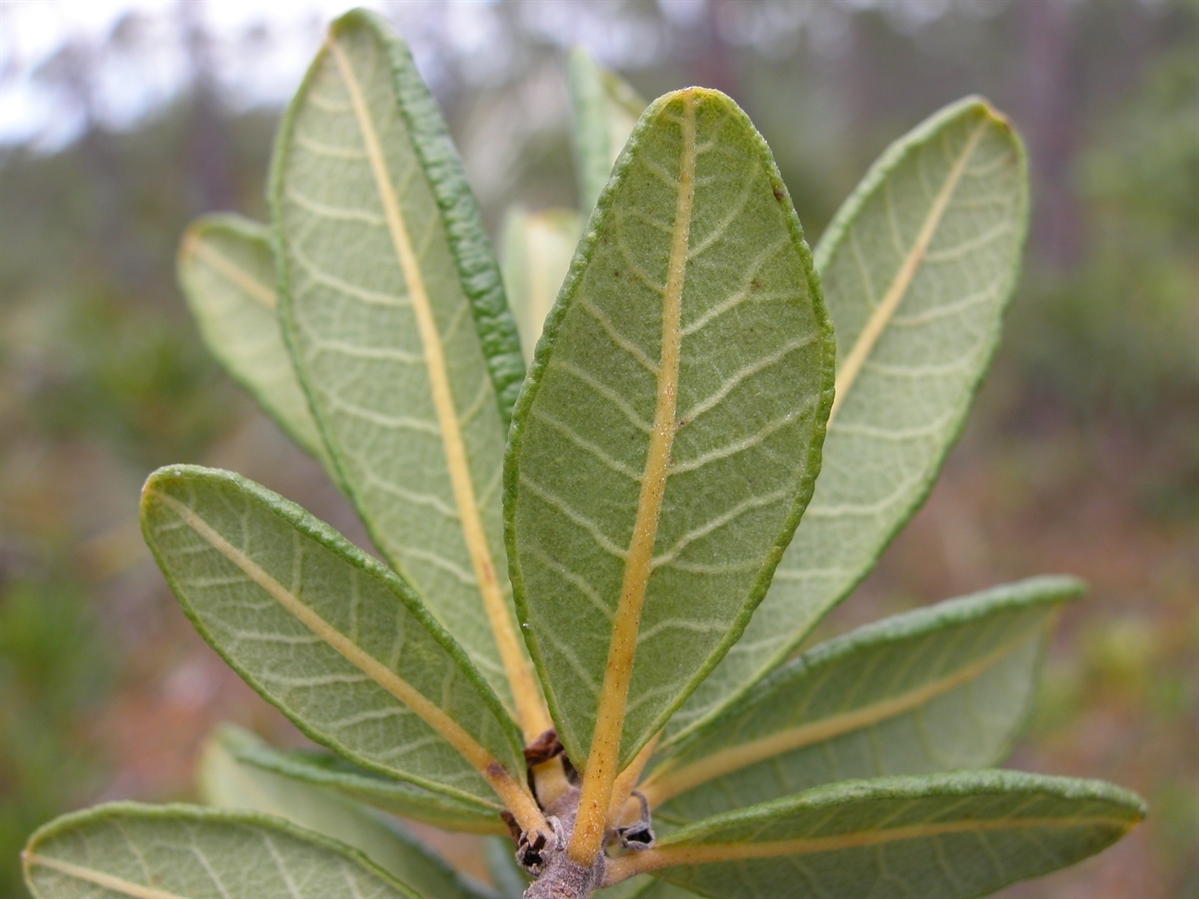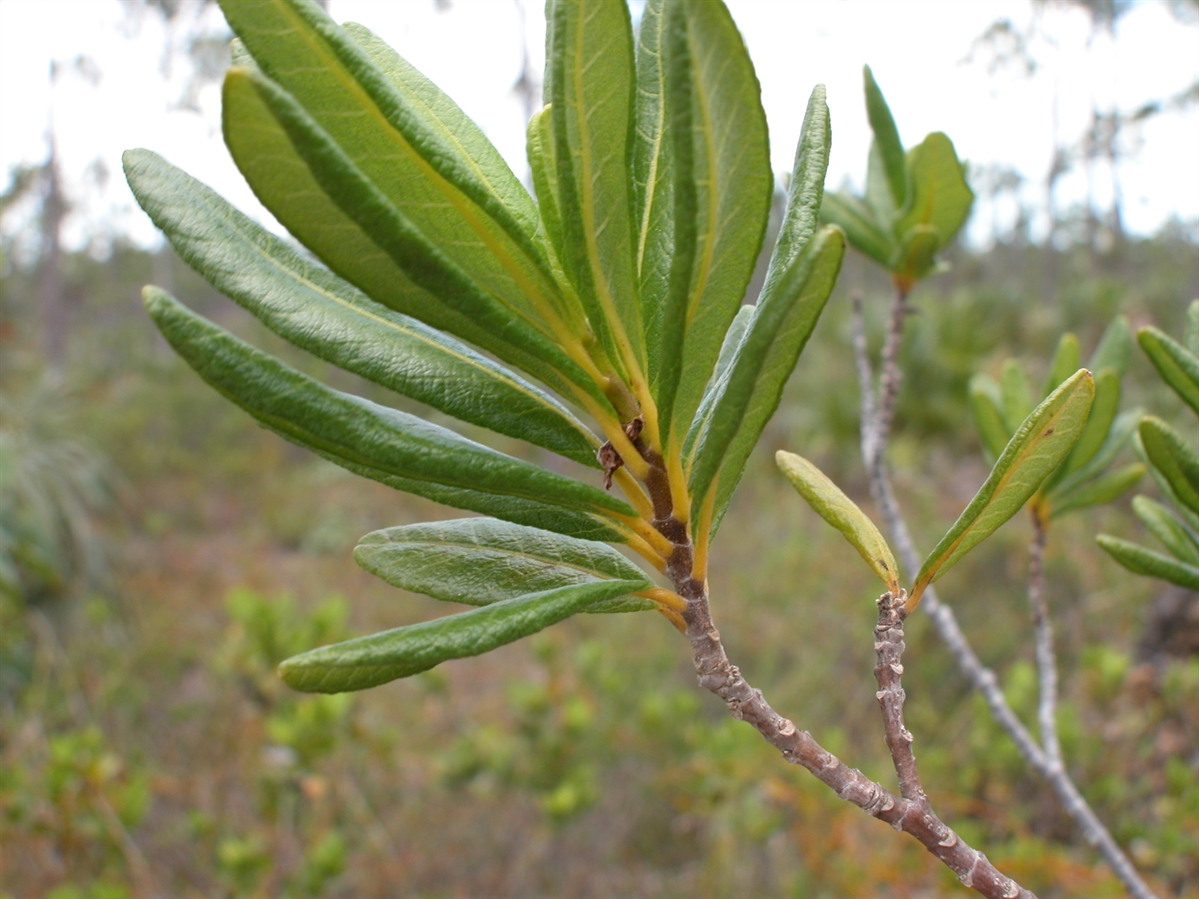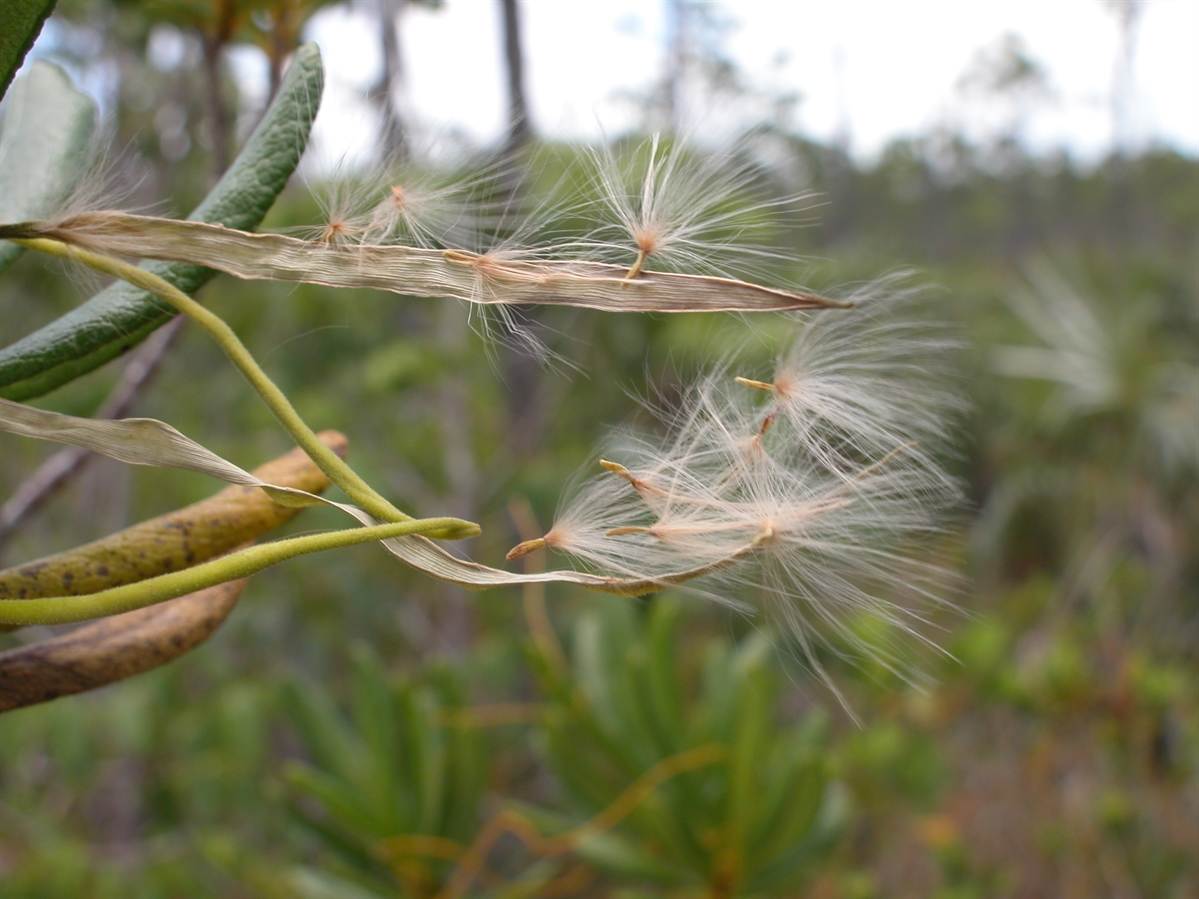Habit: Neobracea bahamensis grows as thin shrub up to 4 meters in height with a small trunk to 5 cm in diameter. The bark is whitish gray sometimes red. The leaves are arranged oppositely, to 7 cm long, 2 cm wide, and clustered at branch tips. The leaves have a rotundate leaf apex and a slightly wavy margin. The venation on the abaxial leaf surface is pronounced.
The complete, perfect, actinomorphic flowers are arranged in clusters in leaf axils. The calyx has 5 unfused, greenish sepals. The corolla has 5 reddish white petals that are fused forming a tube with the lobes overlapping to one side forming a pinwheel shape. There are 5 stamens fused to the corolla tube. The ovary is superior and has two locules and many ovules. The fruit is a follicle that turns brown at maturity. The seeds have tufts of hairs at one end to assist in dispersal.
Habitat: Neobracea bahamensis grows in Dry Broadleaf Evergreen Formation – Forest/Shrubland (Coppice or scrublands) and Pine Woodlands.
Distribution: Neobracea bahamensis occurs throughout the Lucayan Archipelago and Cuba.
Medicinal/Cultural/Economic usage: Neobracea bahamensis is not used medicinally in the Lucayan Archipelago.
